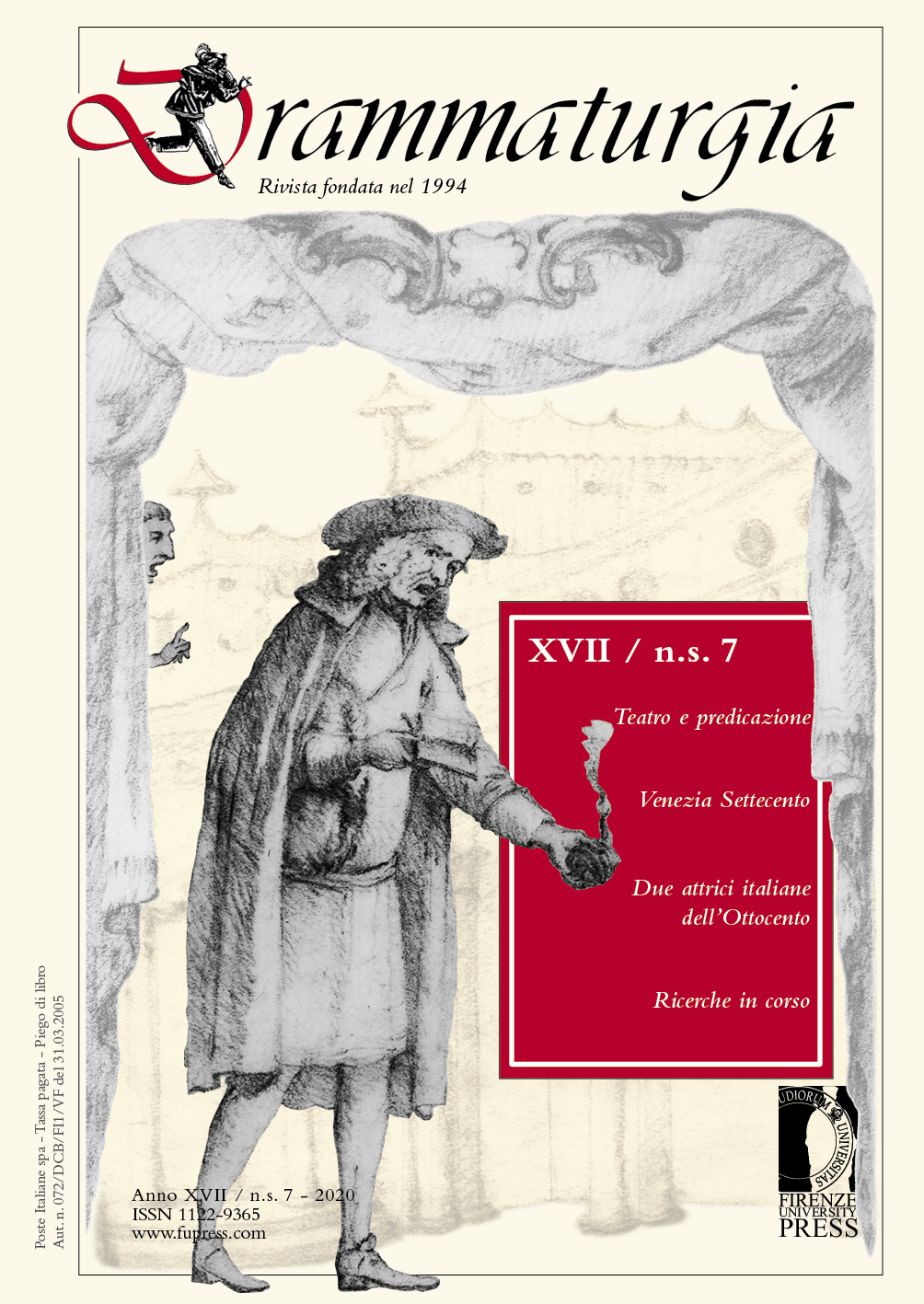Published 2021-03-12
How to Cite
Abstract
The article proposes a study of the Venetian theatres owned by the patrician family Grimani of Santa Maria Formosa, around the middle of 18th century, thanks to the analysis of several documents preserved in Venice: Archivio storico del Patriarcato, Archivio di stato, Biblioteca del museo Correr, and the private Archivio Giustinian-Recanati. It emerged that the political and economic structure of this noble family influenced its theatrical choices, but all the same in a competitive relation with the other theatres of the city. The development of new repertoire forms, such as the fictional comedy or opera buffa, was favoured by the economic recovery wanted by the owners themselves after the fire of the Teatro San Samuele on 30th September 1747. The Grimani family reacted vigorously to this hard blow with progressive choices to redevelop their theatres. In less than ten years (between 1747 and 1755), they provided for the rebuilding of the Teatro San Samuele (1748) and for the change of the repertoire between the same Teatro San Samuele and the Teatro San Giovanni Grisostomo, between the opera buffa and comedy (1751). Finally, they attempted to rebuild the Teatro Santi Giovanni e Paolo for opera seria (1750-1752) and they built the theatre of San Benedetto (1753-1755).


